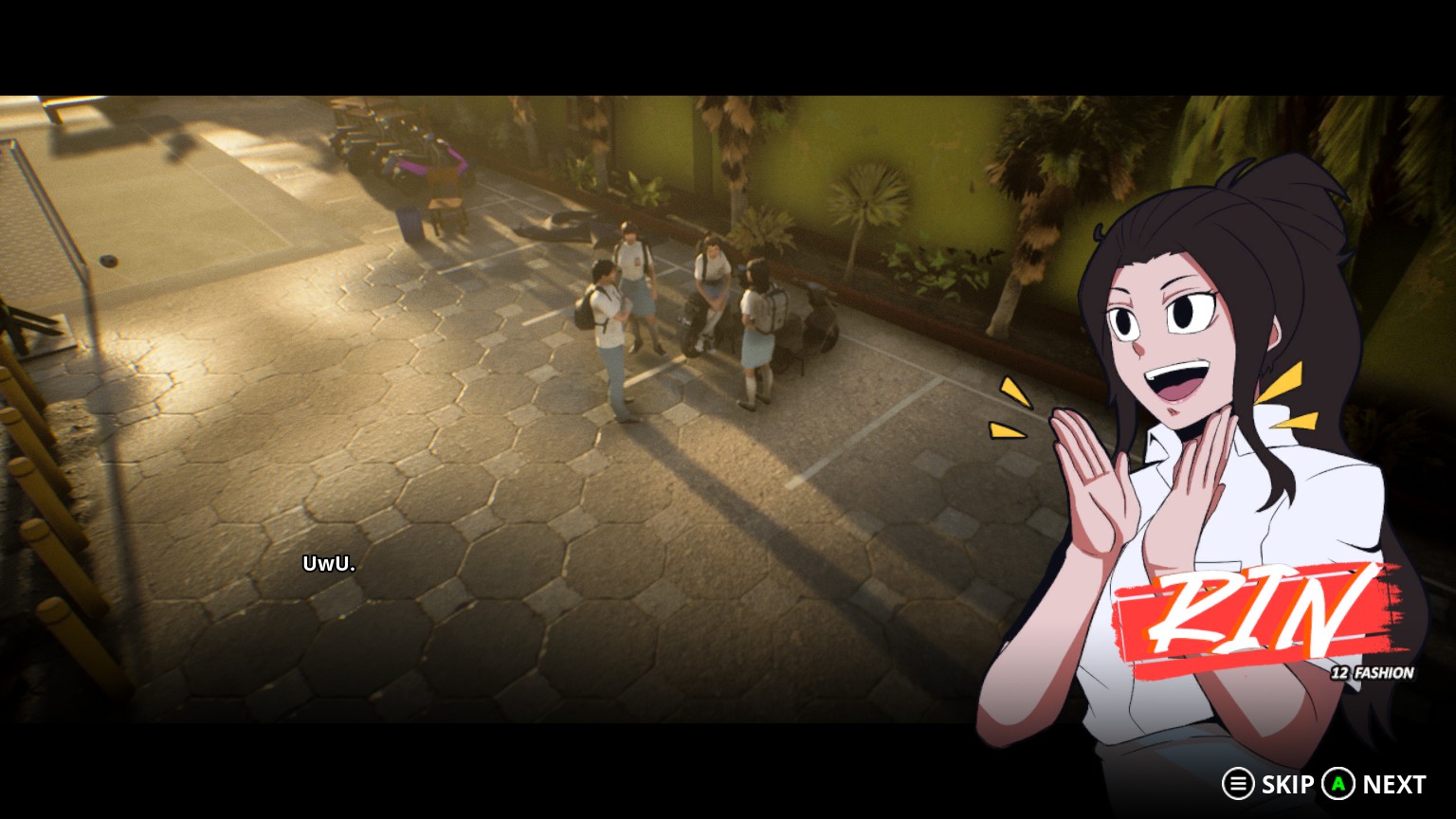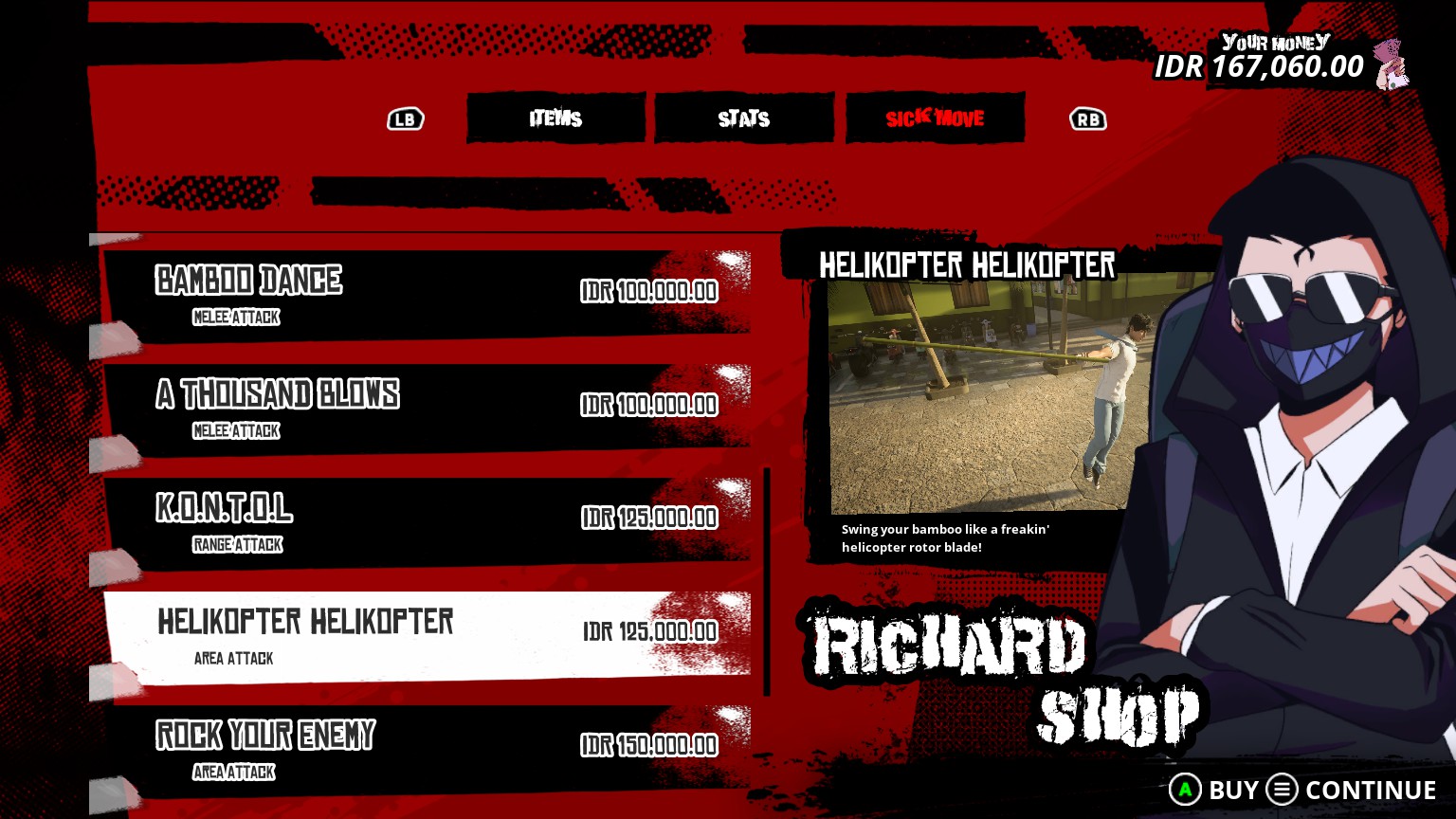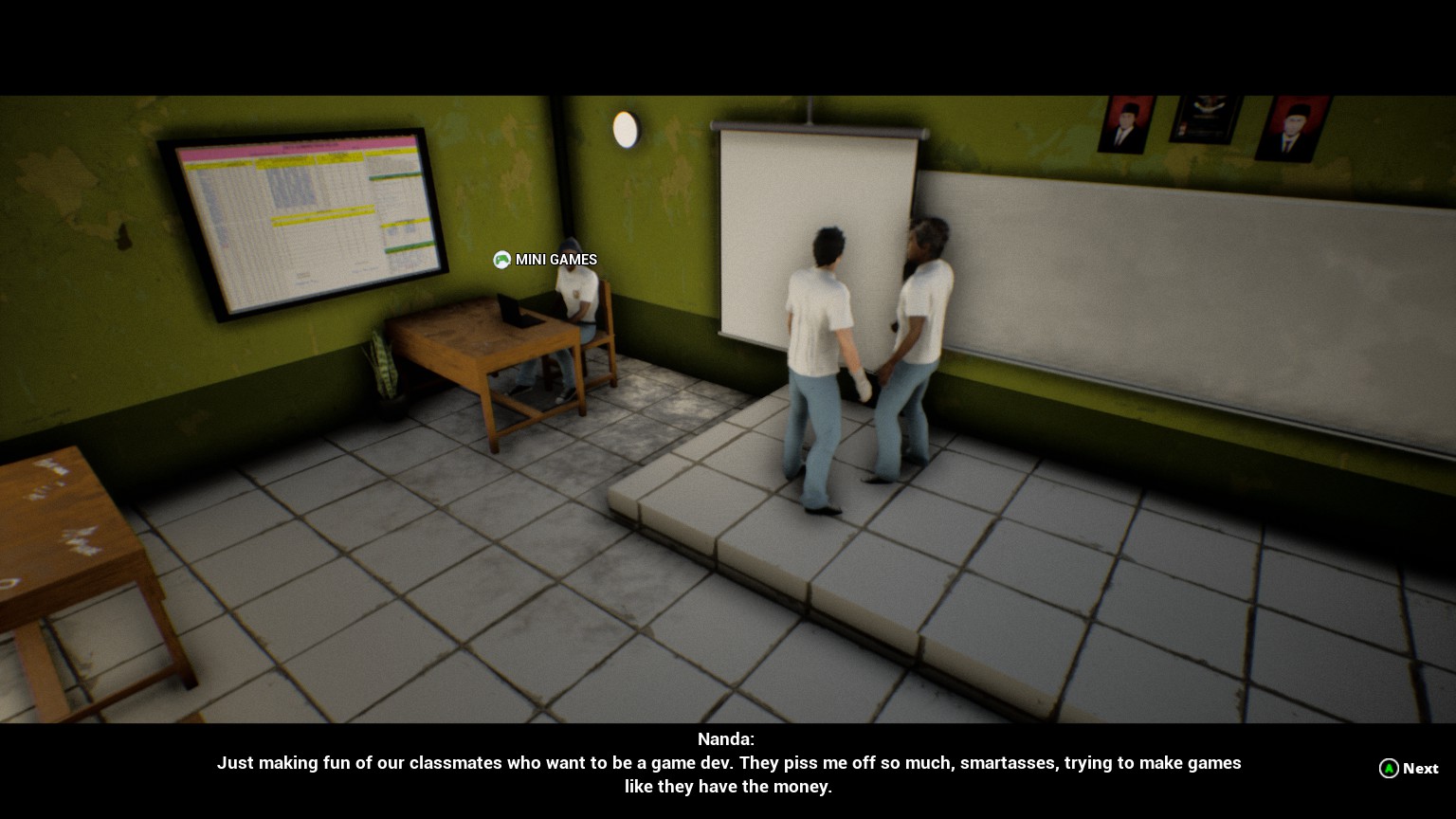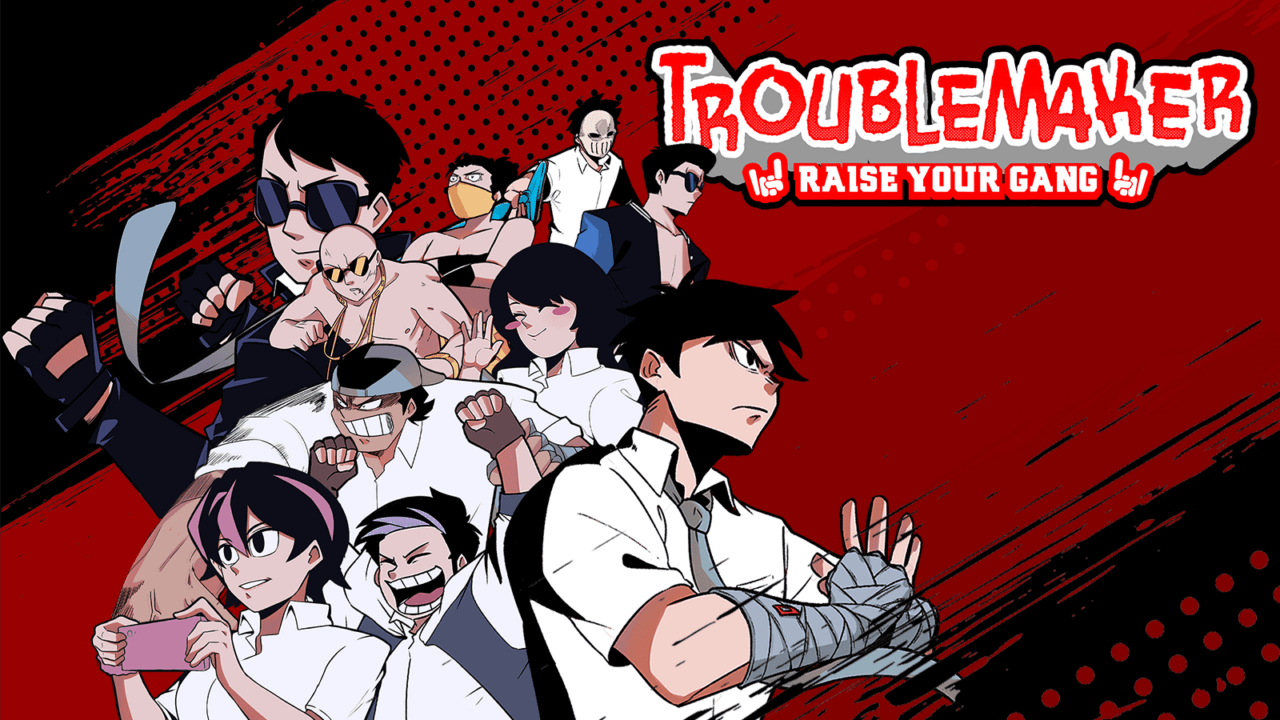I’m going to be straight up with this one – Troublemaker may be the best worst game I’ve ever played.
I know, that sentence hardly makes sense, but bear with me as I try and explain what I mean. Have you ever loved something, knowing full well how badly flawed it is? Like how everyone secretly sings Nickleback to themselves despite proclaiming how terrible they are, or much like how people love trash movies like Sharknado or Meet The Spartans?
Troublemaker is very much within that camp. Despite its numerous, numerous flaws, I bloody loved the ridiculousness of the story, the awfulness of the memes passed off as dialogue, the repetitiveness of the combat and the hilariousness of the glitches and broken mechanics.
There’s something just so endearing about Troublemaker that it somehow punches so far above its weight. Which seems fitting, as it’s basically a perfect allegory for a troubled and cringey high-school kid stumbling their way through life. It ain’t pretty, it ain’t mature, but you can’t help but root for them anyway.
I don’t quite know how I’m going to make sense of this review given my feeling towards Troublemaker, but let’s give it a go.
Trouble, Trouble Maker Yeah That’s Budi’s Middle Name
Troublemaker’s story introduces us to Budi, a teen with a penchant for bruised knuckles and a quick temper. Following a rapid opening where we beat down some thugs and are consequently arrested, Budi’s mum packs him off to a new vocational school, teary-eyed and with the promise of no more fighting. Definitely, absolutely, no more fighting… sure.
Joining your new, totally non-violent, high school, Budi meets his three plucky friends Boby, Rani and Zaenal, each meeting the usual archetypal tropes (the funny meathead, wimpy nerd and attention-seeking social media obsessed girl). Budi also slams head-first into the various gangs that vie for control of the school. Yes, I’m still talking about a high school, with gangs. What is this, 21st century England?
So far, Troublemaker’s story is pretty run-of-the-mill, you might be wondering where it goes off the wall? Let me enlighten you. At this new school, for some utterly non-sensical reason, gangs are actively encouraged to not only form but do bloody battle right in the classrooms or the yard. Why do they host their own teen-spirited Mortal Kombat style Battle Royale?
Because none of the graduates can get jobs, so the government pays the best-in-the-class for being the best, or something.
It’s utterly ridiculous, makes zero sense and the game never even bothers to truly justify it. Kids need money as can’t get job, government will pay money to the gang that out-gangs the other gangs. I’m sure that’s a certified flawless means of fostering a phenomenal education. Must have missed that part of the curriculum.
The story centers on Budi battling his inner desires to… battle… everyone and anyone, while he reluctantly builds his gang of misfits to become the champions. On the way he’ll steal his rival’s girl, deliver some melodramatic backstory and wrestle with people calling him “fuckboi” or shouting “UwU” at him. I’d love to tell you it’s awful, not worthy of merit and completely devoid of any nuance.
Which it is.
But I still, for some unbeknownst reason, loved it. It’s wacky, non-sensical and quite stupid, but I couldn’t help but laugh and get caught up in the irrationality of it all. The gang are oddly endearing despite their tropes and by the end I probably was as invested in them as I am “look at this photograph” when I guiltily listen to Nickleback when no-one’s around.

Persona Non Grata
Troublemaker’s marketing and trailer seemed to suggest that as you navigate the perils of high school, you’ll need to build up your friendships, go to classes, do homework, that kind of Persona-esque social gameplay. Well, I can confidently say you don’t. While you do attend classes and do homework, this is specifically in a linear, story-driven means.
If you were hoping for Bully’s QTE science mini-games to develop your abilities and skills, you’ll be disappointed. The narrative and gameplay are as on-rails as an overly controlling teen D&D player who flips the table should they not get their way.
Once you reach chapter 6 or so, you can wonder around a tiny sandbox space to engage with the kind of mindless chat one would expect from a bunch of puberty-stricken teens stuck in a school where gang-warfare is as normal as picking up their Mie Goreng for lunch. That is to say, it’s hideously written, but hilariously so.
From complaining about the girl they’ve met online taking their money to a dude telling you to get lost cause he’s having a dump (with the associated YouTube sound effect), the blue speech bubbles were a constant source of trepidation and anguished excitement all at once. Completely superfluous, I still unknowingly found myself compelled to seek each one out, if for nothing else but to see the next meme reference, cringey pop-culture swipe or terrible attempt at social commentary.
As much as I rolled my eyes at every turn, I did so with a smile on my face. It’s incredibly immature on purpose, which doesn’t make it any better, but when I cackled from a software student complaining about how making video games is a fruitless endeavour or the subtitles exclaimed how the writer couldn’t even comprehend the algorithms the maths-loving student was spewing, I found myself enjoying it. Far more than I’m prepared to really admit.

No Punning In The Halls
Once you get over the dialogue itself, you can somewhat explore the mini-expanse of this vocational school/fight club. There’s not a whole lot of it, owing to it being two small corridors, an open courtyard and a tarmacked square complete with a football and goals. Yes, yes I did spend 5+ minutes awkwardly maneuvering Budi to ensure I scored a sick tap-in.
Between chapters, you can partake in a variety of mini-games, some of which are… okay. Some of which are side-splittingly terrible. Budi can find himself at your mercy as you force him to ride a bicycle or wheelchair with a person attached as you mash A to get a high-score, for example. The “highlight” of the mini-games is the bird race, whereby you try to make a crow/raven (I don’t know which I’m no bird expert) race through 10 glowing hoops. The problem? The overgrown rat might as well be a muscle-less mass of feathers as it smashed into every beam and wall imaginable. It would fly into everything except for the one f****** thing I needed it to.
It was painful, but it was also hilarious as I barreled around for a minute howling at how horribly it controlled. There’s a bunch of other ones, from a pretty decent Gwent-esque card game to delivery runs and even a playable horror game set in the school. They’re far from glowing diversions but I have to admit I was impressed at how well-developed a couple of them were and how horrendously implemented others were. Superb.
Getting into fights, completing mini-games and progressing the story earns you money, which you can then spend with Richard to purchase combat-boosting items, stat upgrades and a variety of “Sick Moves”. To give you some context, your “Sick Moves” can be “Helikopter Helikopter” (you better have read that in the vine voice) where you spin relentlessly at an opponent with a bamboo stick. Or better yet, the “T-Pose”. No, I’m not messing with you, the most expensive move in the game is the literal personification of glitches. It instantly knocks down every opponent in a blaze of glory and technical brokenness.
Incredible.
Money comes thick and fast so upgrading feels consistently satisfying and while the different “Sick Moves” don’t always especially work as intended, each is pretty humerous and exciting to try out once in it’s own way. Remarkably, the upgrade system is probably the one part of Troublemaker that works without any caveats.

Finish Him!… And Your Homework
Enough with the side diversions, let’s get into the real meat of this beat-em-up, brawler gameplay. You’re a Troublemaker, how much trouble can you cause with your fists and a bad attitude?
Well, if you imagine Yakuza’s combat mechanics, melted down in a forge of teenage angst and reconstructed by that kid you never trusted at school, this is probably what you’d get from that wreckage. Again, I actually thoroughly enjoyed my time playing Troublemaker, so I don’t hate its combat, far from it. It’s just incredibly flawed and slightly broken, is all.
Budi can throw light and heavy attacks (X and Y), deflect and block (B), evade and sprint (LT) and lock-on to a target (RT). Can you select which target to you want to focus on in a melee? Of course not, what do you think this is, Dark Souls?! You mash light and heavy attacks, occasionally hitting B to parry an opponent, then stand off for a few seconds to recover your stamina, rinse repeat. I mean Budi is a teen with some anger issues I know he’s not the most athletic, but damn does this kid need some conditioning.
Luckily, the AI teens you face aren’t the sharpest tools in any shed. Ever. So, they’ll usually stand around and wait for you to attack, only occasionally overwhelming you with force. Once your meter builds up enough you can deploy your special “Sick Moves” and should you break an opponent’s defence you can literally curb-stomp them into the next school year. I mean the teachers are watching me stamp poor Alan’s head shouldn’t they be stopping this?! (Cue The Simpsons “he’s already dead” line).
Combat never really changes as the game progresses, whether it be bosses or regular kids you’re beating up, you’ll be throwing the same basic combo and firing off your special once it’s ready. If you get low on health you pop a consumable and you’re good for another scrap. I never even came close to being KO’d on normal thanks to the ease with which you can back up and chug wine (yes literal wine heals you, Budi knocks them back like a champ) whenever needed.
Despite the endless repetition and lack of any significant combat diversity, it’s a simple and fun system. You aren’t getting Arkham quality combat or Yakuza level chaos, nor should you expect it. Honestly, the biggest enemy you’ll face is the camera on some sequences. But, I’d be lying if I said I didn’t enjoy kicking a chair at Udin and laughing at his recoil animation time after time. Never got old.

Elementary Effort
I suppose we had better talk about Troublemaker’s problematic behaviour presentation. In general terms, the attempt at a realistic look kind of works… for the backgrounds and objects in the distance. Look a little closer at basically anything and it’s a whole lot of undefined smoothness, like every person in this world has moisturised about 3,069 times a day.
Animations in combat are, rather shockingly, quite smooth, particularly the parries and deflects that you can pull off. If nothing else, Troublemaker does have a bit of style, it’s just quite outdated, like the leather jacket and slicked back hair combo. The anime drawn cutscenes look great, but any in-game scenes are more devoid of life than a teenage dropout trying to look cool smoking.
Budi also runs like he’s got a brick up his arse which doesn’t help matters.
Now let’s get to the glitches. Hoooooooo boy, the glitches. Budi’s character model is locked to where the camera places him, which means if the camera gets knocked out of whack, he’ll be magically teleported about. Which happened to me twice – while you can pet the cat, I wouldn’t recommend it for that exact reason. After finishing a mini-game I must have paused at just the wrong moment, as it wouldn’t reset the environment and I was stuck in a first-person view magically sliding an invisible Budi around.
Those are okay, given a quick restart or interaction can fix them. The random control lock-ups though? Those aren’t quite as redeemable, they fail the test miserably. After a combo or knocking out enemies, occasionally Budi will just stand there motionless (he still had stamina, I checked!) as the thugs I’m supposed to “dominate” beat him to death with a broom. That’s not even mentioning the rampant pop-in and washed out filter on the lighting. Oy vei.
Still, despite the issues, Troublemaker graphically is serviceable and the framerate was relatively solid on ultra settings. I’d give it a C+.

Meet Your Troublemaker
Playing Troublemaker is an experience. It’s a messy, unsophisticated, ridiculous and immature game. The story is incomprehensible, the graphics and gameplay are washed out and poor imitations of better titles. It’s writing is all over the place, with thousands of “UwU”s mixed in amongst dozens of meme-culture references.
Like the underdog kid in a fight though, there’s something plucky and endearing about it that just makes you want to love it. All of its flaws I just reveled in, laughing along with the idiocy and the brokenness. At no point was I wanting to stop playing it. In fact, I ended up staying up way too late just to finish it because I couldn’t tear myself away.
I wanted to see the conclusion, the next hilarious glitch and awful joke. Troublemaker is the kind of game you know isn’t great, but on a personal level it’ll be one of your favourites for no discernable reason. I never understood the hype around Deadly Premonition, perhaps Troublemaker has shown me what it is to love a game I know is objectively flawed. What a brilliant mess this game is.
Now, if you don’t mind, I’m off to beat the s*** out of Alan with a bamboo stick and a sick T-Pose.
Troublemaker is another Deadly Premonition, in that it’s a game that’s objectively flawed, broken and messy. Even so, the ridiculousness and sheer enjoyment it’ll bring to your face as you continue to play will make you love it for what it is – an immature, hilariously enjoyable beat-em-up with a non-sensical story and repetitive gameplay. One of the best worst games you’ll ever play.

Troublemaker is available now on PC (review platform).
Developer: Gamecom Team
Publisher: Freedom Games
Disclaimer: In order to complete this review, we were provided with a promotional copy of the game. For our full review policy, please go here.
If you enjoyed this article or any more of our content, please consider our Patreon.
Make sure to follow Finger Guns on our social channels –Twitter, Facebook, Twitch, Spotify or Apple Podcasts – to keep up to date on our news, reviews and features
